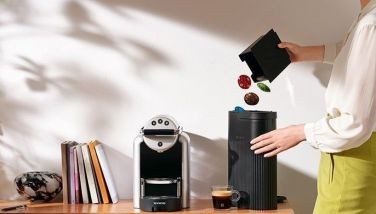Ilocos comes to town
On a bright Saturday morning, a bazaar was held in the grounds of a Makati residence to showcase all things Ilocano — local delicacies, hand-woven textiles, woodcraft, antique jewelry, handmade fans, baskets, fruit wines and spirits. The Gameng Bazaar came to Makati for the first time and for a whole-day affair. The Iloco word gameng refers to the wealth of Ilocos Norte found in its proud history, its culture, and industrious people. This northern province known for its scenic beauty yet harsh terrain has spawned hardy men and women, revolutionaries, national leaders and large-than-life figures who have shaped the Filipino landscape.
The Gameng Bazaar pays tribute to the work and the crafts of the Ilocanos today and the traditions that have long endured. The proceeds from the sale of these products will benefit the Museo Ilocos Norte in Laoag City. The Museo Ilocos Norte was founded in 1999 and is housed in an historic Tabacalera warehouse built in the 19th century.
On Aug. 9, 2002, the museum received the Gawad Alab Ng Haraya award from the National Commission of Culture and the Arts for the outstanding conservation and adaptive reuse of a heritage structure. The museum houses several galleries, each highlighting an aspect of life in Ilocos Norte. As such, visitors will see market implements, fishing equipment, traditional musical instruments, fine examples of Inabel hand-woven textiles, artifacts and tools used by various ethnic groups who live in the highlands of the eastern and southern parts of Ilocos Norte. The Museo Sarusar Gift Shop features special crafts and works of art exclusive to the museum.
“The museum’s mission is to give focus to the traditional culture of Ilocos Norte as seen in the industries, the crafts and the way of life of its people,” says Araceli Albano-Drake, the museum administrator. “It is a way of connecting our people, especially the youth to their distinct culture and their homeland,” she points out. These days, the museum attracts visitors from all over the country, including balikbayans and European guests.
Miles away from Laoag tents were pitched in the garden of contemporary Makati home teeming with goods to delight housewives, foodies and just about anyone who is up for a good find. For starters, there were generous cuts of bagnet, bunches of longanisa from Batac, soft rolls and crunchy biscochos from Pasuquin, organic sea salt packaged in native baskets and rice coffee from Banna. One stall was dedicated to the by-products of the dragon fruit. Among these were dragon fruit ice cream, tasty lumpia fillings made from the fruit flesh, embotido slices made with the dragon fruit skin.
Nearby, the famous Ilocano empanada filled with chunks of longanisa, chopped eggs, monggo and papaya in an orange-colored dough that was deep-fried. Rice cakes known as tupig made from diket, coconut milk and molasses came wrapped in banana leaves in a tubular shape — all stacked in a neat heap. Still other stalls offered hopia with fillings made from dried flowers, raw sugar known as panocha, bagoong, cornicks, local vinegars, fruit wines and liquors. Before proceeding further, I picked up a native basket to contain all my food purchases.
I moved to a section featuring finely crafted wood boxes, bowls and containers — ideal gifts for all occasions. Then, it was on to the jewelry section where Natalya Lagdameo reworks antique jewelry pieces such as Tamborines into designs that work with casual or formal wear. The next two sections were among my favorites. Monchet y Compania featured elegant fans made from pineapple or banana fiber and processed wood, each handmade and embellished with colored tassels attached to rhodium-plated silver rings. All are contained in hard boxes trimmed in raffia.
The company has been in business for more than half a century. During the visit of Queen Sofia of Spain to the Philippines, the company was commissioned to make a special fan as a commemorative gift for the queen. A replica of the fan was shown in the booth that day. Looking at these objects of delicate beauty, in sublime shades of indigo, ecru, lilac, or bronze says much about the artistic sensibilities of our designers and craftsmen.
I made a last stop at the stall of Balay Ni Atong that showcased Abel Iloco textiles. These hand-woven textiles are known to be among the finest in the country. Long ago, these sturdy fabrics were used as sail cloths during the Spanish colonial period. Today, its uses are versatile as they are fashioned into men and women’s wear, ternos and formal gowns as well as various home accessories. There was quite a range of home accessories on view that day.
There were the traditional white kundiman blankets with borders stitched in pale pink, mint green or royal blue, bed covers in pearl gray or celadon green both embossed with patterns in white, travel blankets and countless other choices in heavily woven patterns and a medley of colors. It was easy to linger over the enticing selections of silk scarves and cotton blankets, tablecloths and runners. I finally settled on a kundiman blanket with a navy blue border and a travel blanket in an orange, blue and yellow weave — both perfect for cool nights while reading on a lounge chair.
When it was time to leave the bazaar, I was glad to have seen and purchased locally grown and crafted items made by our fellow Filipinos from up north. Reading about their stories and epic struggles in Filipino novels and history books made me realize that so many of them, whether leaders or common men, have given meaning to the Filipino identity.
In the late afternoon back at home, I was enjoying a grilled Batac longanisa with a warmed soft roll from Pasuquin and a cup of Banna rice coffee. As I sat on my lounge chair with book in hand, I pulled the kundiman blanket over me. There couldn’t be a nicer way to spend a leisurely afternoon. I hope the Gameng Bazaar comes to town again soon, and more often. For the board members of Museo Ilocos Norte — namely Irene Marcos-Araneta, Liza Marcos, Araceli Drake, Al Valenciano, Hanna Cunanan, Dr. Joven Cuanang, Fr. Danilo Laeda, Mary Ang, Sally Aoigan and Cecilia Aribuabo — the bazaar was a way to bring the best of Ilocos Norte to city dwellers who may not have the time or the chance to make the long journey up north.
Should the response be favorable, it would likely become a bigger and more regular affair. Many of us who were there that day hope that we will see more of such events come to town — those that bring Filipinos in close touch with their culture, and those that make us look upon our fellow Filipinos with pride that is well-deserved for their creativity, their artistry and their industry.















